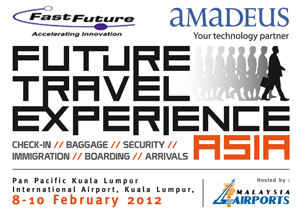Over the course of the next 15-20 years, a number of technological advancements will dramatically alter the world in which live, and according to Rohit Talwar, Global Futurist and CEO, Fast Future Research, the airport and airline industries must prepare for these changes now, as “only the paranoid will survive”.
Talwar explained that by 2030, we will see “massive advances in material science and nano technology”, and industry must react accordingly in order to satisfy the demands of tomorrow’s passenger.
“The industry needs to understand this is happening, it needs to start thinking in terms of roadmaps into the future and developing a mindset that’s continuously looking over the horizon at what’s coming next,” Talwar explained.
Over the course of the next two decades, the emergence of self-cleaning and self-repairing materials could become commonplace in both airport and aircraft design, and hypersonic travel could also be a reality. However, while airports and airlines should recognise that such developments are possible, understanding the needs of the future passenger is even more important.
Talwar said: “The key is about getting close to the customer, really understanding what they want from the experience, and then picking the technologies appropriately to support that.”
“Open innovation”
Airport 2025 at FTE Asia

At FTE Asia 2012, Global Futurist and CEO of Fast Future Research Rohit Talwar will jointly present with Amadeus’ Patricia Simillon the findings of a major research study exploring the airport of 2025. The study includes future scanning, a global passenger survey and interviews with over 60 leading airport and airline executives and experts from a range of fields such as retail, leisure, entertainment, culture, media, gaming, sport and healthcare, with the primary aim of developing different scenario models of the compelling airport experience in 2025.
In terms of future development, two key factors will emerge, Talwar added. “You’re going to see very high price sensitivity and we’re going to need very high levels of business model innovation. That means you’re going to have to be paranoid. You can’t simply assume that because you’ve changed something and you’ve created something that’s profitable this year, that model will carry on.
“You’ve got to keep reinventing, keep changing things – you’ve got to break business models before they run their course, so that you can bring the next one in and try to get temporary advantage, because sustainable advantage is just a myth.”
While the development of services and facilities is often aligned with increased cost, Talwar explained that airports will have to “become more research-focused”, citing a closer partnership between the airport and the supplier during the research and development phase as a key component. Not only will this lead to more “open innovation”, but it will also create new revenue streams as these jointly-created services and facilities can then be sold to industry counterparts.
With the world set to change dramatically during the next two decades, so will the challenges facing airports and airlines. However, as long as they accept that this change is happening, invest time and resource in understanding the needs of the passengers of the future, and are willing to continuously embrace innovation to satisfy these needs, the potential exists to deliver a truly enhanced passenger experience.






